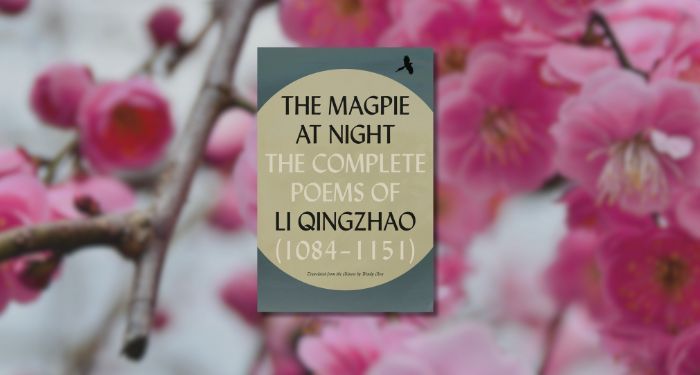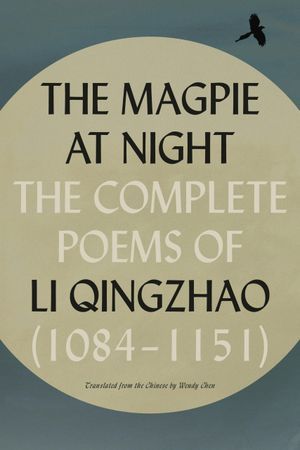This content contains affiliate links. When you buy through these links, we may earn an affiliate commission.
I have a tendency to spiral down the long, dark hole of uncertainty into the anxious spaces of my mind. Maybe you know this experience, which is a real drag and a sucker punch to the quality of one’s life. Over time and alongside therapy, I’ve found a few tried and true coping mechanisms that work for me–creative writing, exercise, reading at night until I’m too tired to lie awake overanalyzing everything, mindless television. The challenge is finding something I can turn to quickly–say when I’m in the middle of my work day–some way to snap my attention elsewhere and disrupt the spiral–and I believe I’ve hit upon it. The exercise of reading a certain kind of poetry (which I now keep on my desk) soothes my troubled soul while offering positive distraction, and this is the collection that initiated my new practice.
The Magpie at Night: The Complete Poems of Li Qingzhao (1084-1151), translated by Wendy Chen
It’s not that I’ve never read poetry like the verses I found in The Magpie at Night. In fact, the familiarity of the collection might be what kept me turning the pages, at least initially. I found it comforting as I find the poems of Emily Dickinson comforting, in particular the calling up of nature for rumination. When I read about plum blossoms, withered red petals, or the “autumn sadness” in Li Qingzhao’s poems it’s in hushed tones, like a warm breeze across a quiet lake.
There’s a great tradition of writers like Dickinson and Qingzhao–Mary Oliver too–who turn the practice of reading poetry into meditation, and the brevity and simplicity of Qingzhao’s poetry makes that practice accessible to a pleb like myself whose goal isn’t to prize deep meaning out of the oyster, but to let the words sink in and release some tension. And while the poems were obviously written so long ago, they are so inward looking they don’t require you to have a lot of historical context before you start reading. That said, it’s always a great practice to learn about the author and their time because context can provide useful perspective on the work, and Li Qingzhao was a fascinating and groundbreaking writer well worth getting to know.
I didn’t know what to expect with this collection and certainly didn’t predict it would be a balm in troubled times but, as it turned out, Li Qingzhao’s vivid imagery transported me from my troubles, lifting me from the doldrums and giving me something beautiful to behold so I could carry on.
In Reading Color
A weekly newsletter focusing on literature by and about people of color!
The comments section is moderated according to our community guidelines. Please check them out so we can maintain a safe and supportive community of readers!


